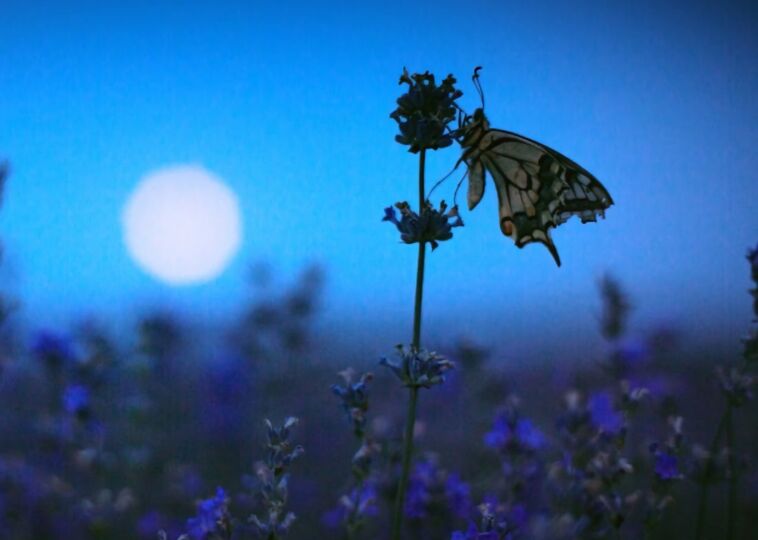Let Night Blooming Flowers Light Up Your Garden

Contents [hide]
You’re relaxing in your garden under a starlit sky, surrounded by an enchanting array of flowers that only bloom at night. If you don’t already have these night-time wonders in your garden, you’re missing out on a unique experience that can turn your evenings into something truly magical.
Night-blooming flowers aren’t just a visual delight; they can offer a transformative experience, turning your garden into a fragrant retreat. As the sun dips below the horizon and the stars begin to twinkle, these flowers start their show, revealing their stunning blooms and filling the night air with their captivating scents.
Night Scented Orchid

Imagine walking through your garden as the sun sets, only to be greeted by the delicate fragrance of exotic flowers. This isn’t a dream; it’s the magic of the Night-Scented Orchid, also known as Epidendrum nocturnum. Native to the lush, tropical regions of Central and South America, this remarkable orchid transforms any evening into an enchanting experience.
There’s something undeniably magical about an orchid that only reveals its authentic charm after dark. It’s like having a secret garden where the flowers whisper their beauty to those who seek it. Whether you’re an avid gardener or just starting, adding the Night-Scented Orchid to your collection promises an unforgettable sensory experience that will captivate and delight.
Nottingham Catchfly

If you’re passionate about unique plants and their fascinating behaviors, the Nottingham catchfly should be on your radar. This mesmerizing wildflower, with its delicate yellowish-white blooms, is a marvel of nature that thrives in Southern Finland’s rocky banks and hillside ridges.
Named after Nottingham Palace in England, where it was first discovered, this Eurasian catchfly reveals its most enchanting qualities after the sun dips below the horizon. As evening sets, the Nottingham catchfly unfurls its blooms, releasing a robust fragrance that fills the air.
Evening Primrose

The evening primrose, Oenothera biennis, isn’t your average garden plant. With over 145 species in the primrose family, the evening primrose stands out for its dramatic, night-only display. Imagine this: as the sun sets, the plant’s bright yellow flowers unfurl, filling the night air with a strong, sweet fragrance that makes your evening garden come alive.
So why does the evening primrose only bloom at night? These flowers are adapted to open in the cool evening air to attract nocturnal pollinators like moths. If you’re inspired to bring a touch of this night-blooming marvel into your garden, here’s a quick guide. Evening primrose thrives in well-drained soil and prefers full sun to partial shade.
Chocolate Flower

When you think of enchanting night-time blooms, the Chocolate Flower, scientifically known as Berlandiera lyrata, should be on your list. This remarkable plant is more than just a pretty face; it’s a sensory experience that combines stunning visuals with an irresistible chocolate aroma.
Chocolate Flowers bloom from mid-spring to late summer, but they stand out: they only open their petals at night. As the sun sets, these blooms unfurl, releasing a sweet, cocoa-like aroma that lingers until morning. The rich, chocolate-like fragrance is an olfactory treat that sets these flowers apart.
Tropical Night Blooming Water Lilies

They create a breathtaking visual feast with colors ranging from deep purples and electric blues to fiery reds, soft pinks, vibrant oranges, and sunny yellows. Tropical night-blooming water lilies are colossal, with diameters stretching from 2 feet to an impressive 12 feet.
Their sheer size is matched only by their beauty, as their large, floating leaves and striking blooms create a dramatic presence in any pond. To thrive, tropical water lilies need specific conditions.
Night Blooming Jessamine

Also known as night jessamine or night-blooming Cestrum, this woody evergreen shrub is a star of the night-time garden. Originating from the West Indies and South Asia, it’s a plant that thrives in the warm embrace of summer and offers a sensory feast for those who love the magic of twilight.
The Night Blooming Jessamine is like a hidden gem that reveals its beauty only when the sun goes down. This plant is a notable presence in any garden, growing to a height between 6 and 13 feet. The Night Blooming Jessamine bursts into a spectacle of tiny, tubular greenish-white flowers when the warmer months roll around.
Moonflower

The Moonflower, Ipomoea alba, is renowned for its striking white-pink blossoms that bloom as the sun sets. As the name suggests, these flowers unfurl at dusk, casting a gentle, moonlit glow across your garden. Imagine a soft, silvery illumination in the evening as the flowers open up, resembling a full moon hanging delicately among your foliage.
With the right conditions, Moonflowers can reach impressive heights of 6 to 15 feet, creating a lush, cascading display of foliage and blooms. This scent enhances the night-time atmosphere and attracts nocturnal pollinators like moths.
Four O’clock Flower

Enter the enchanting world of Four O’Clock flowers, scientifically known as Mirabilis Jalapa. These flowers have earned their name for a charming reason: they open up around four o’clock in the afternoon, extending their beauty into the night and delighting your senses until the morning light.
One of the most striking features of Four O’Clock flowers is their incredible variety of colors. Whether you’re drawn to the fiery hues of red, the soft blush of pink, the sunny brightness of yellow, the serene calm of blue, or the classic elegance of white, there’s a Four O’Clock flower to match your aesthetic.
Night Blooming Cereus

The Night Blooming Cereus, a member of the cactus family, is a botanical marvel that captivates with its elusive beauty. Known for its rare and fleeting bloom, this plant only reveals its stunning white flowers for a single night each year, typically between June and July.
The flowers, with their creamy white petals, unfold after sunset and remain open until dawn. The Night Blooming Cereus has a fascinating relationship with its nocturnal pollinators. Sphinx moths and nectar-feeding bats are the primary pollinators of these stunning flowers.


